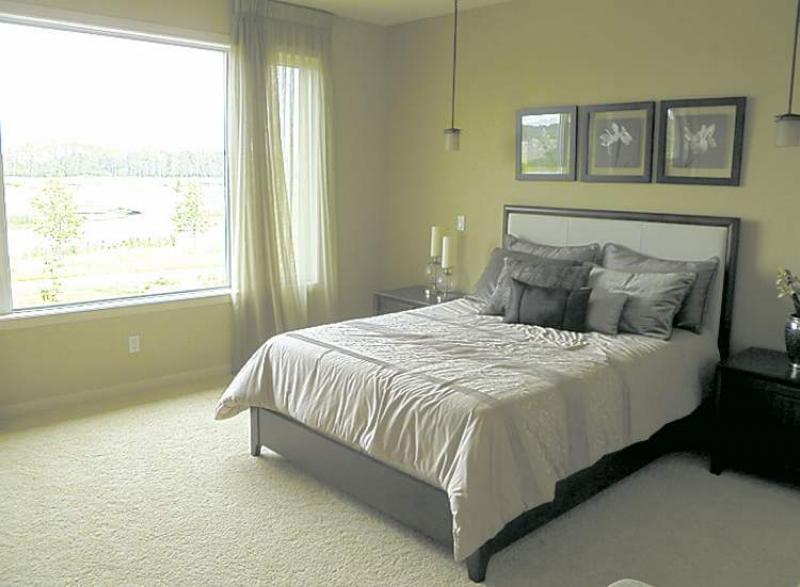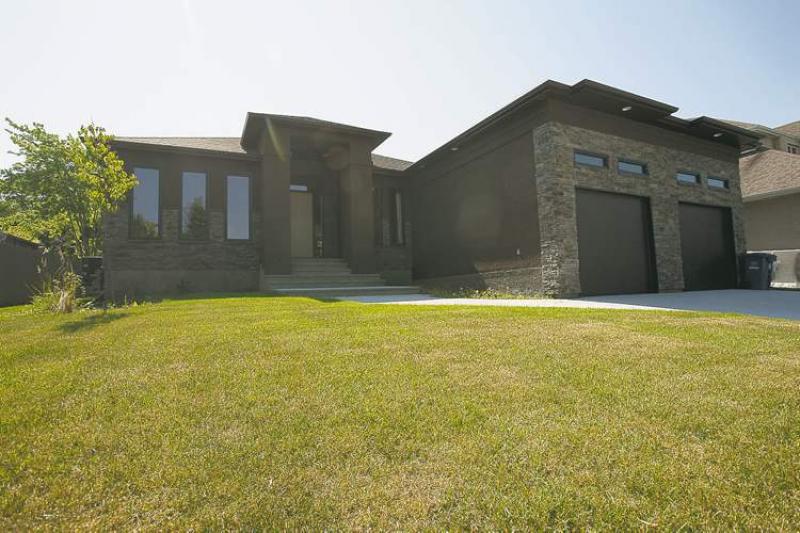New Homes
New Homes
Winnipeg and Manitoba are reno leaders
Canadian Renovation Leaders. Both Winnipeg and Manitoba have earned this title. Let's look at some of the supporting information.
Winnipeg has the third-oldest housing stock in Canada and the oldest in Western Canada. On one hand, this means that builders here produce homes that last a long time. Manitoba builders have long been reputed to be among the best in Canada and, obviously, given our considerable variances in climate, our new homes have stood the test of time.
On the other hand, older homes generally mean increased renovations over time. The average square footage of a 50-year-old home is smaller than ones being built now, and so additions are a popular feature.
Manitoba leads the country in energy-efficiency initiatives, and so many renovations are for energy-saving upgrades. Many homeowners like their home, like their neighbours and like the local services they currently enjoy. So, rather than move, they renovate.
Manitoba is the only province where more money is spent on renovations per year than on new-home construction. This fact actually presents a double bonus for Manitobans.
Our renovation sector certainly enjoys a healthy existence, but this also speaks to the fact that our new-home market is extremely affordable with average prices tending to be lower than elsewhere in Canada. The combination of the two helps explain our leadership in that area.
The average renovation in Manitoba is slightly more than $8,000 -- below the national average in terms of costs, but leading the nation in frequency. With the cost of resale homes steadily increasing and inventory demand remaining high, this is an opportune time to consider a renovation for your home.
The Manitoba Home Builders' Association advises all consumers to shop with care when hiring a renovator for any project. Look for the RenoMark symbol to ensure that your renovator complies with all of the principles of this program.
A RenoMark renovator provides a detailed written scope of all work; offers a written warranty; carries a minimum of $2 million of liability insurance; ensures that all applicable licenses and permits are secured; and maintains a safe worksite.
All MHBA renovators carry the RenoMark label. After all, given that Winnipeg and Manitoba have earned the titles of the renovation capitals of Canada, it's only fitting that they continue to offer the best-quality service to their clients.
Mike Moore is president of the Manitoba Home Builders' Association.
New Homes
We can continue to grow at a reasonable rate
The second wave of information from the 2011 Census of Canada was recently released. This provided information on trends in population by age, which proved to be vital information for the housing sector.
In 2001, Canada's median population age was 37.6 years. In 2006, it was
39.5 years. In 2011, this increased over a full year to 40.6 years. Canada's declining death rate for those beyond 65 coupled with the progressive aging of our baby boom population accounted for this increase in average age.
At a median surpassing 40 years, Canada is one of the ""countries in the world. Only a handful of countries, including Japan, Spain, England, most of the Scandinavian countries and a smattering throughout Europe can boast life longevity as high as ours.
From 2006-2011, Canada's population grew by 370,000 and increased in all age categories except for the 35-44 group. What does all of this mean for housing?
Ownership percentages increase by age group as income becomes more solidified. The under 25 age group generally has very low home ownership percentages. The percentage increases significantly in the 25-34 age bracket and then increases sharply again in the 35-44 age bracket.
All age groups above 44 still indicate an increase in ownership, but the percentages do not increase as rapidly. A slight degree of concern arises nationally with the recent decrease in the 35-44 age group.
New-home buying rates indicate the rate by which households purchase newly built homes. The older the household, the less mobile they tend to be and therefore the less likely they are to buy a new home.
However, the concept of downsizing after empty nesting continues to stimulate the new home industry in spite of increasing household age.
National statistics do not always reflect regional patterns. However, it is always sage advice to heed these signs in our planning. In this manner, we can continue to grow and prosper at a reasonable rate in Manitoba.
Mike Moore is president of the Manitoba Home Builders' Association.
New Homes
It's tricky to draw conclusions from housing reports
Every week, I read lots of reports reports on housing trends, reports on costs, reports on the economy, reports on labour, and so on.
Trends and projections are always a favourite food for thought. I particularly enjoy reading reports that introduce contrasting schools of thought, although not so much from the same source or in the same publication.
Such is the case in some recent reports from a credible Ottawa-based financial consulting source. At the start of the article, it went to great lengths to tell the reader that 2012 was going to be a very good year for housing starts nationally.
Starts were going to be up around the 212,000 mark. Condo sales in Toronto and Calgary were increasing rapidly. Vancouver had temporarily righted its ship with some HST amendments. Atlantic Canada was in a growth spurt and Saskatoon, Regina and Winnipeg were ahead of previous years by 75 per cent.
In the very next paragraph, it called for a decrease in national starts to 177,000 units in 2013. The blame was placed on a lack of single-family detached growth and a decline in condominiums based on some speculation.
Let's take a closer look at these numbers. Atlantic Canada, Saskatchewan and Manitoba were never dependent upon the condominium market for their numbers. Calgary is starting to claw back from a few years ago and should hold steady. Toronto is not reliant on single-family detached numbers and neither is Vancouver.
Therefore, what this national report was really saying is that there will be fewer condos built in Vancouver and Toronto in 2013 than in 2012. There, I said in 15 words what it took them 15 pages to say.
A couple of Canadian Press reports also caught my eye recently. One reported consumer debt was growing at its slowest rate since before the recession; about 30 per cent lower than last year. Mortgage debt, credit card debt and bankruptcies were all down from last year.
Generally, a good news article, right? However, imbedded within this article was another smaller article, from the same financial source, that warned layoffs can be very dangerous to those carrying debt. Really? I guess this source wanted to give and take all in the same breath.
As I said in the introduction, all of this is interesting reading. However, drawing a conclusion from some of these lofty reports is another matter.
Mike Moore is president of the Manitoba Home Builders' Association.
New Homes
New-home market remains strong in Manitoba
The first six months of 2012 are over and it seems to be a good time to review the new home market statistics.
Last year was a tremendous one for starts in Winnipeg and throughout the province. Although some areas were understandably sluggish due to flood-fight conditions, 2011 represented the most new home starts in one year since 1987. In fact, there were slightly over 6,000 starts in Manitoba last year.
Early projections for this year called for an increase of about 100 units from last year. The single-family detached sector would remain steady while the multi-family would carry the bulk of the increase. That being said, the increase would only amount to about three per cent.
However, 2012 started out extremely fast with the first quarter vastly exceeding expectations. This pace, almost impossible to maintain, has remained strong throughout the second quarter, to the point where we are able to analyze the first six months as a whole.
The City of Winnipeg is enjoying growth in single-family detached starts from last year that is slightly ahead of projections, whereas the new development areas surrounding the city have experienced tremendous growth. Winnipeg has doubled its production of multi-family units from last year, thereby accounting for almost the entire growth in that sector for the province.
The Canada Mortgage and Housing Corporation remains confident that new home production for 2012 will continue to flourish and finish above 2011 levels. Winnipeg's growing population is creating the need for new housing.
Some experts have called this a "trickle-up" effect where people are moving from rental to resale to new housing as their financial status relating to equity improves. Projections of continued low mortgage rates are enabling people to take advantage of opportunities for new home ownership.
This growth pattern is also evident in the resale market where increased sales and prices continue to exhibit the strength of our Winnipeg and Manitoba markets. The first six months have been very good for sales with a shortage of listings being the only deterrent from even greater numbers. The demand for new and used homes is definitely evident in our local markets. Availability continues to be impacted by the number of listings in various neighbourhoods and an ongoing demand for skilled labour.
If one can project the rest of the year based on the first six months, this year is going to be another strong year for new home starts in Manitoba, both in the single-family detached and multi-family sectors.
Mike Moore is president of the Manitoba Home Builders' Association.
New Homes
Safety first for homeowners and pros alike
Every year, numerous Manitobans get injured on job sites. In most cases, they are preventable injuries.
There are also many cases of Manitobans injuring themselves working on a DIY home project. Again, most of these were preventable.
With the projects that we all do at home, safety often requires nothing more than thinking ahead and using a little common sense. Few people cut their lawn in bare feet with a powerful mower that has a razor-sharp blade? But how many wear safety goggles when sanding a cupboard for re-painting? When working on the your eavestroughs, do you properly anchor and secure your ladder?
We're not experts on construction safety, and few of us have all the proper tools and equipment at our disposal at home. However, the consequences of an accident, including the impact on our health and families, are no less at home.
Take a minute, think the job through and employ whatever safety precautions that you have at your disposal. It may add a couple of minutes to the job, but it may save you much more.
Professionals are not immune to preventable accidents either. Most tradesmen know better, but some are occasionally guilty of failing to use proper safety devices to help minimize the chance of a serious accident.
Fall-protection, for instance, has been publicized tremendously over the past year and, on the residential construction front, is emphasized more than any other safety concern.
Recently, I witnessed a project on a church roof. It was a severely sloped roof and two men were securing shingles. I could see their fall-protection lines, and it was obvious that they'd taken the proper steps to protect themselves.
However, their two helpers were climbing ladders with full packs of shingles on their shoulders, one hand on the ladder and one on the bundles. They were not tied off. When they got to the roof, they continued up another 20 feet holding onto the shingles and little else.
Neither of these men were utilizing any form of fall protection and the potential for a serious accident was extremely high, though I have no doubt that they've done this many times before and were confident in their abilities.
Safe work procedures are everyone's business. None of us can afford to take shortcuts.
Mike Moore is president of the Manitoba Home Builders' Association.






